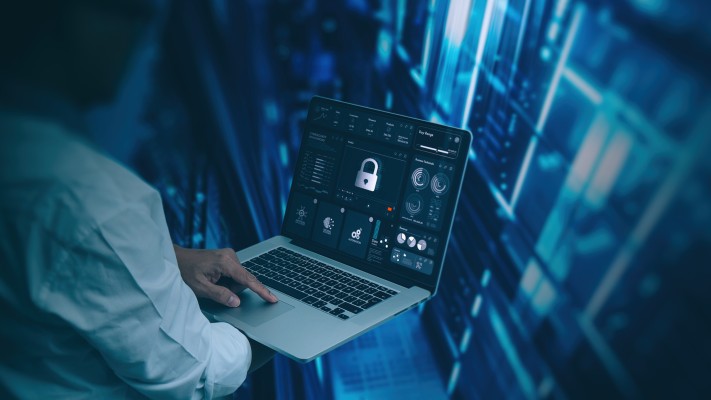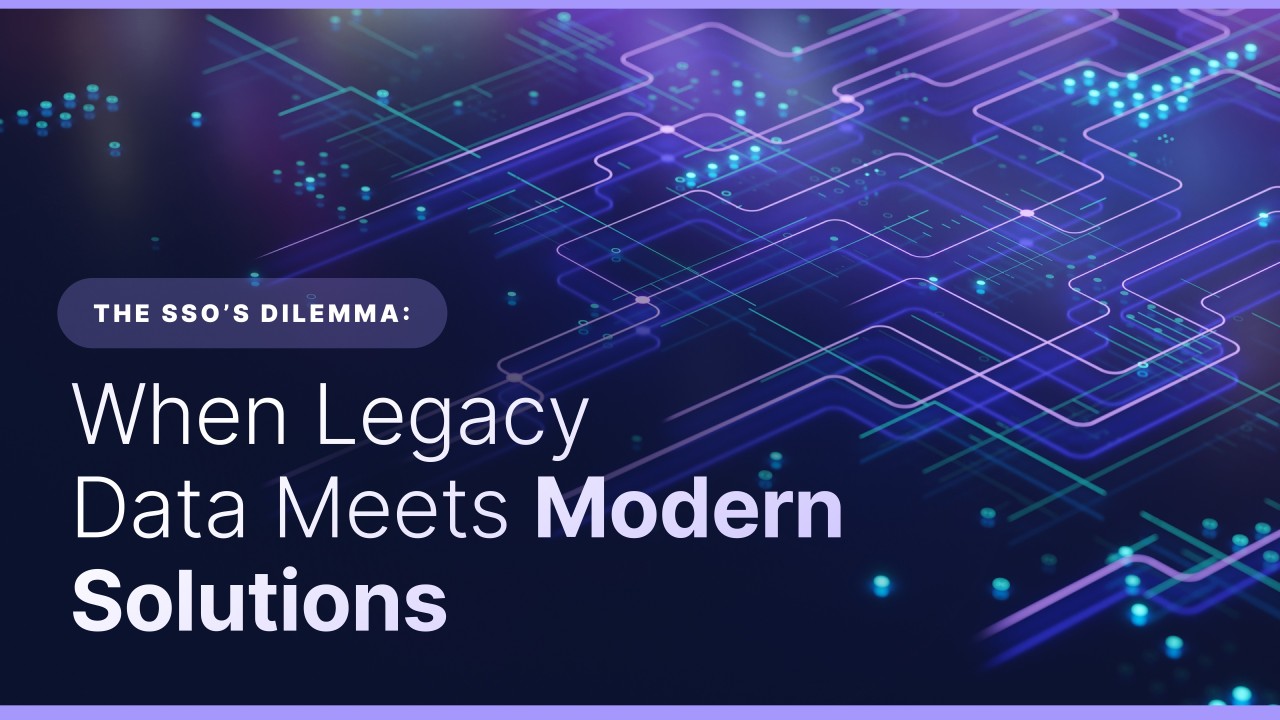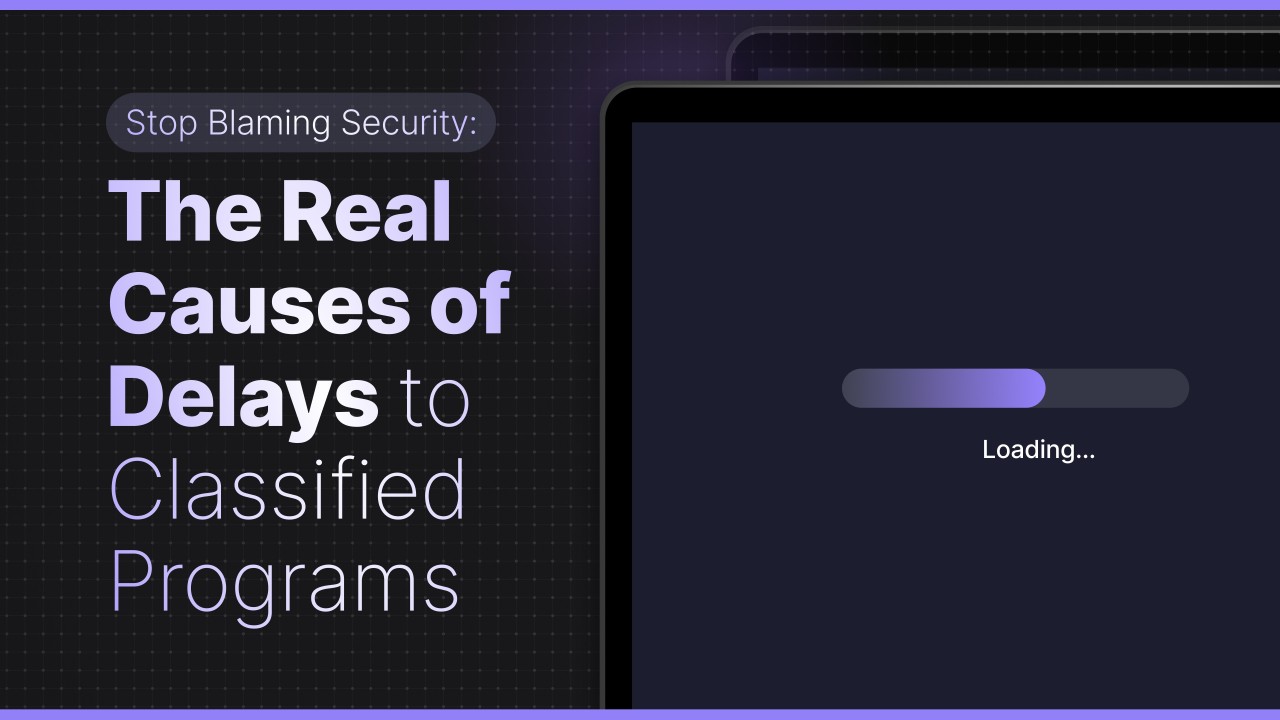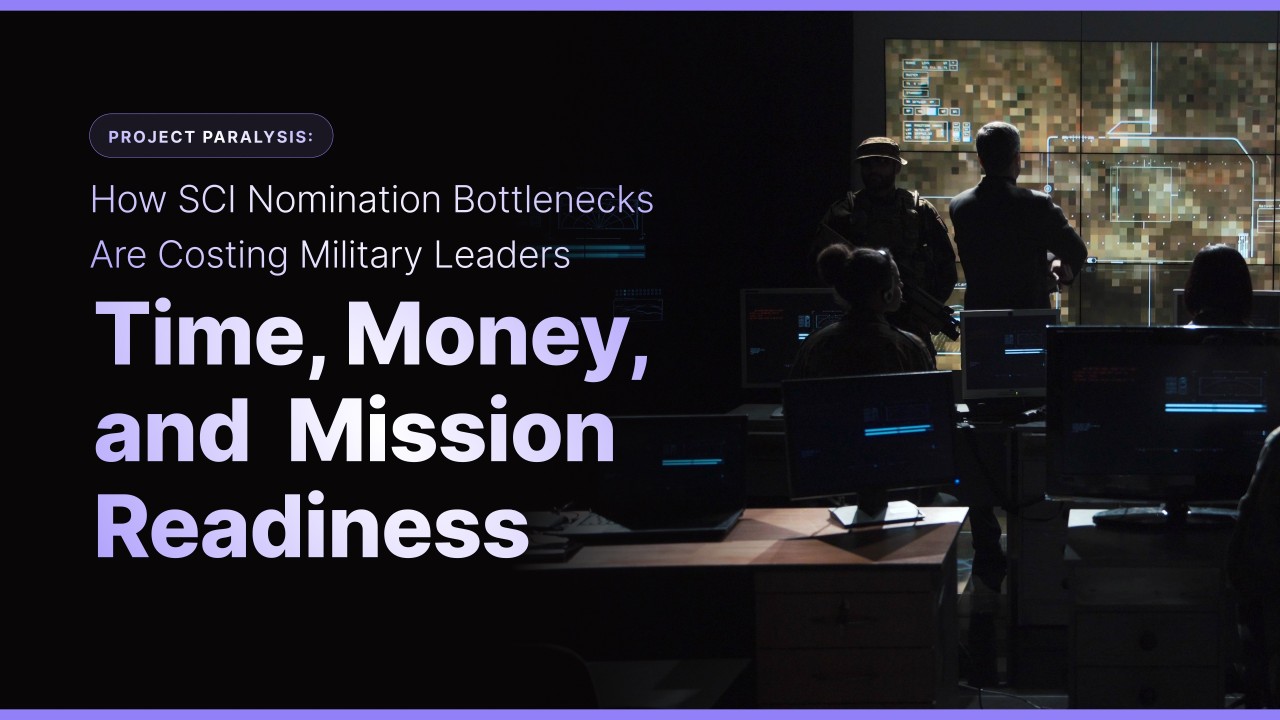Let’s have a candid conversation about the real challenges security professionals face when considering new technology.
If you're a government or industrial Special Security Officer reading this, you probably know the feeling. Your office has been handling critical data scattered across ad hoc management systems that were state-of-the-art when they were implemented—but that was years ago. Maybe decades ago. You are probably still using Outlook to send and receive sensitive information or process nomination actions.
Now there's pressure from leadership to "modernize" and "digitize," while vendors pitch you shiny new SaaS solutions that promise to solve all your problems. But here's what keeps you up at night: What if it doesn't align with how I conduct ops? What if I don’t want a top-down solution, designed by people I don’t work with, that will change how I operate?
The Weight of Responsibility
Let's be honest about what you're really facing. You're not just managing data—you're safeguarding information that directly impacts national security, personnel safety, and mission success. When a vendor tells you their new system will "seamlessly migrate" your legacy data, you hear the word "seamlessly" and think about all the ways that you can find seams.
You've seen technology implementations fail. You've watched other organizations struggle with data migrations that were supposed to be "simple." And unlike a commercial business that can recover from a bad quarter, your data represents years—sometimes decades—of irreplaceable security determinations, investigations, and clearance decisions.
The stakes couldn't be higher.
The Legacy Data Reality
Here's what nobody wants to say out loud: your legacy data probably isn't perfect. It's been created by dozens of different people, under different policies, using different processes, over many years. Some records might have inconsistencies. Some might be incomplete. You probably have data or files that have exceeded the legal retention period. Some might exist in formats that newer systems don't immediately recognize.
But here's what else is true: that data is still incredibly valuable. It represents institutional knowledge, decision patterns, official historical records, and security insights that your organization depends on every day.

The Partnership Question
When evaluating new solutions, you're not just choosing software—you're choosing a partner who will have their hands on your most sensitive information. This raises questions that go far beyond technical specifications:
- Do they understand the compliance environment you operate in?
- Have they successfully migrated data from systems similar to yours?
- Can they work within your security protocols without compromising them?
- What happens if something goes wrong during the transition?
These aren't just vendor qualification questions—they're trust questions. And trust within the security community isn't given haphazardly.
What "Digital Transformation" Really Means for SSOs
When leadership talks about digital transformation, they often focus on efficiency gains and cost savings. But for security professionals, the real question is, will this actually help me do my job better and reduce the administrative burden?
A truly effective modern system should:
- Make it easier to find and reference historical decisions
- Be intuitive in nature and ease onboarding of new personnel
- Provide 100% compliant oversight and audit capabilities
- Significantly reduce the time spent on administrative tasks and extra duties
- Improve visibility and accountability across geographically separated security teams
- Properly handle sensitive information
If a new solution can't actually improve these areas, then the risk of change may not be justified—regardless of what leadership wants.
The Migration Reality Check
It’s worth considering that modern data systems often reveal insights that weren't visible in legacy formats. For example, a network folder containing hundreds of official PDF forms does not contain actionable data; it basically is a repository of analog images that still require visual review and interpretation by a human. When historical data is properly structured and searchable, patterns become apparent. Relationships between cases become clearer. Inconsistencies that existed in isolation become part of a broader context that actually makes them more useful, not less.
This isn't about "fixing" your legacy data—it's about putting it into a system where its full value can be realized and the manual grind of click-to-open review is put to rest.
Moving Forward Thoughtfully
The decision to adopt new technology should be based on a clear-eyed assessment of:
- Your current pain points - What specific problems need solving?
- The partner's track record - Have they successfully handled similar transitions?
- The implementation approach - Can the transition be done effectively and safely?
- The long-term value - Will this assist me going forward
A Final Thought
Managing the security for a major enterprise is a complex task with moving pieces and constant change; it isn’t easy. You fill this role because you understand the importance of protecting the integrity of classified information and enabling the warfighter. That same judgment and work ethic that makes you effective in detailed security tasks should guide your technology decisions.
The right solution, implemented by the right partner, can make your job easier without compromising the security and integrity you've worked so hard to maintain.
Trust your instincts. Ask tough questions, proof, not promises.
At SudoTouch, we’ve helped security teams across government and industry successfully transition to SCINET—a secure, purpose-built platform for managing access to SCI without compromising legacy value.
Have questions about how SCINET augments mission capability in high-stakes environments? Reach out to Cade Peterson (USAF, Ret.) at cpeterson@sudotouch.com.








